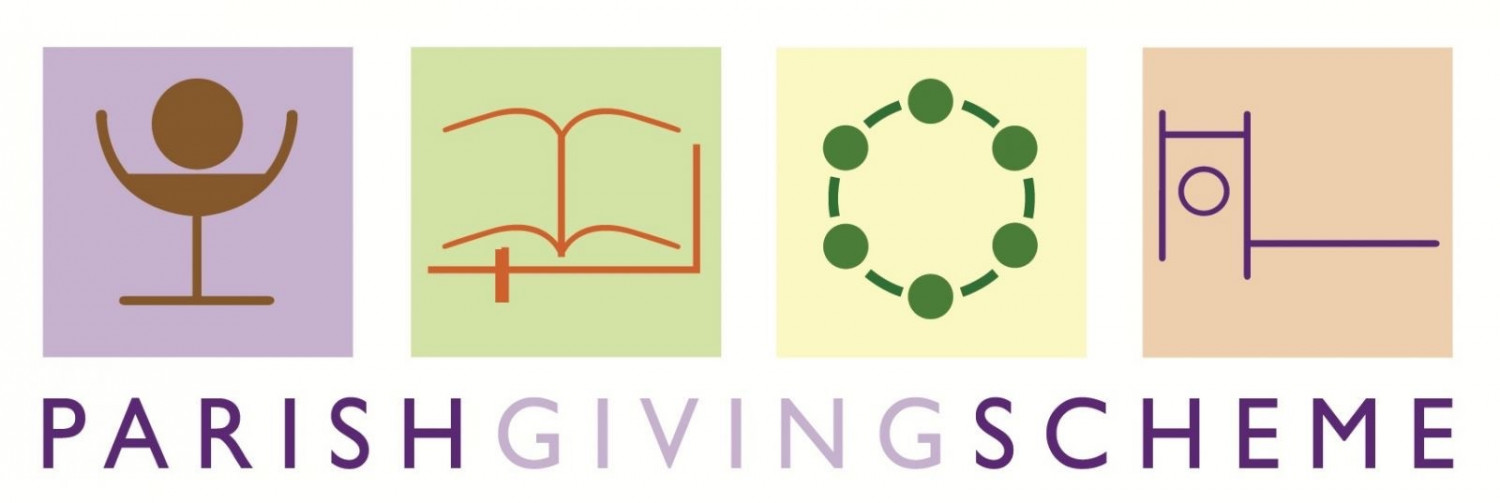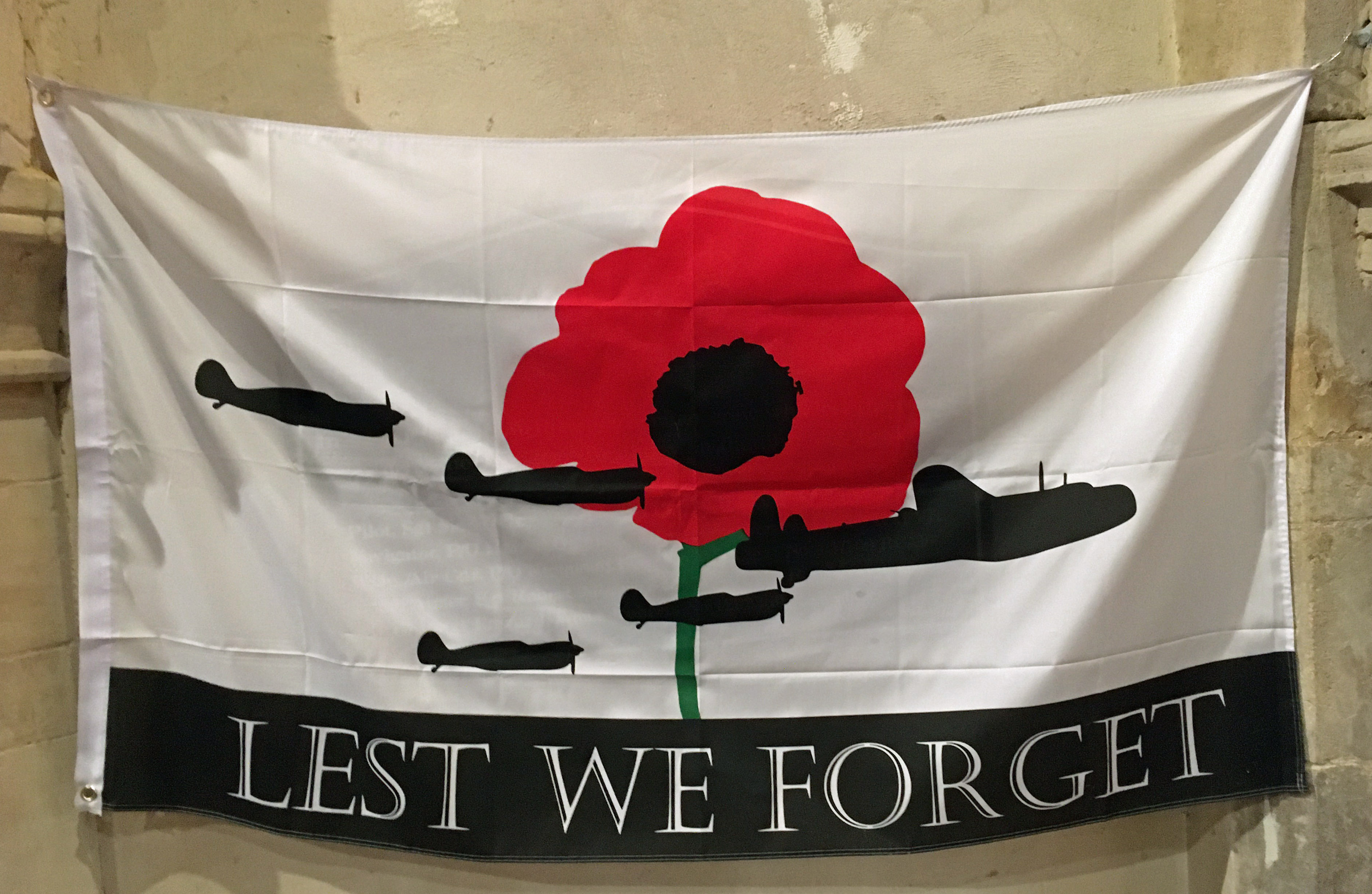
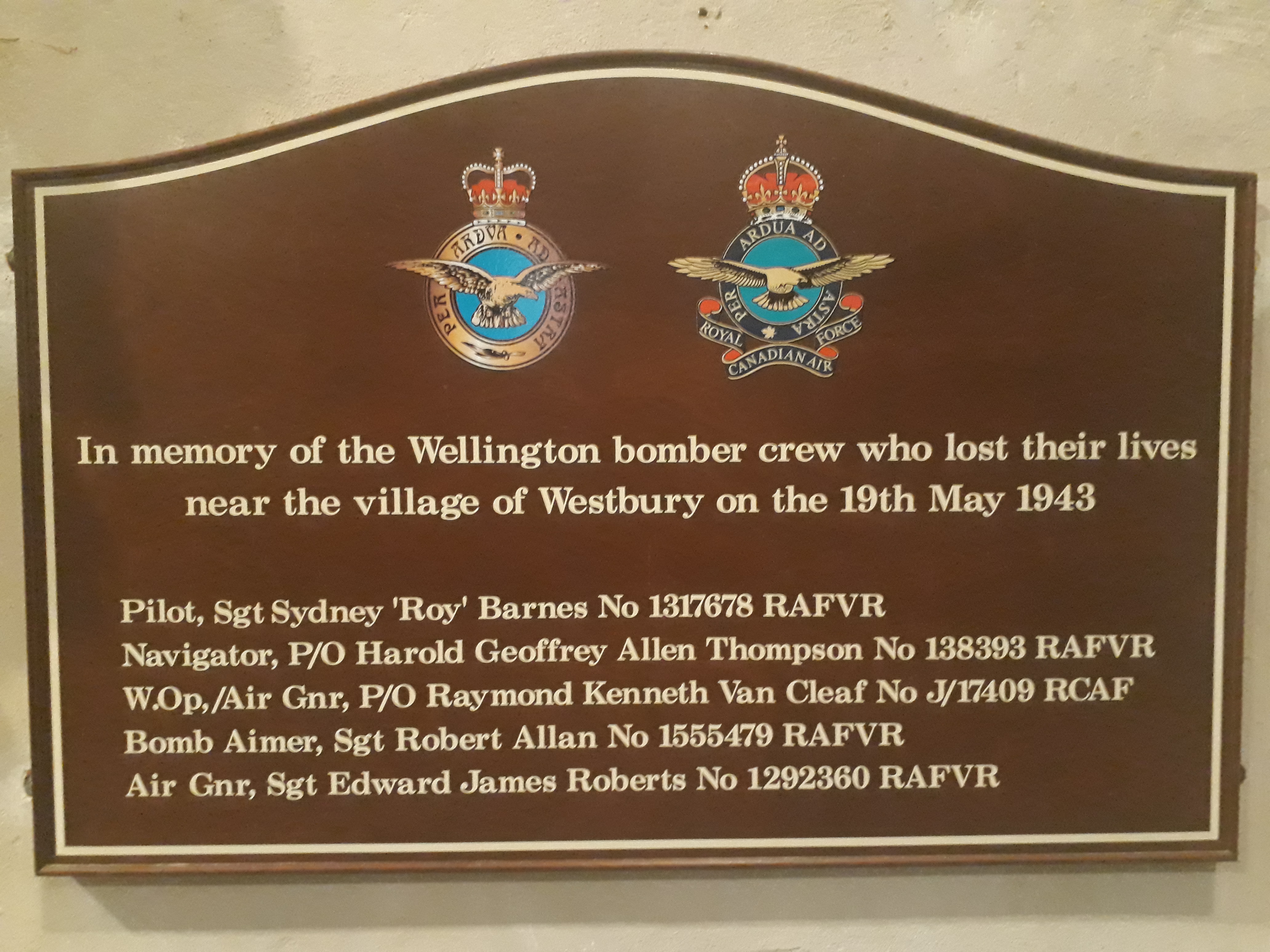
On Remembrance Sunday in Westbury 2019 we commemorated the crew of Wellington Bomber HZ437 that crashed near Westbury village killing all five crew.
The family had asked that a permanent memorial be placed in the church and this is now mounted at the tower end of the church if you would like to visit and view.
The family led by Stuart Harlow, took part in the service with poems, a Scottish lament and a moving account from one of the relatives whose father was on board the plane. Representatives from both the RAF & US military also took part in the dedication and they, and the family, laid wreaths at our outside war memorial.
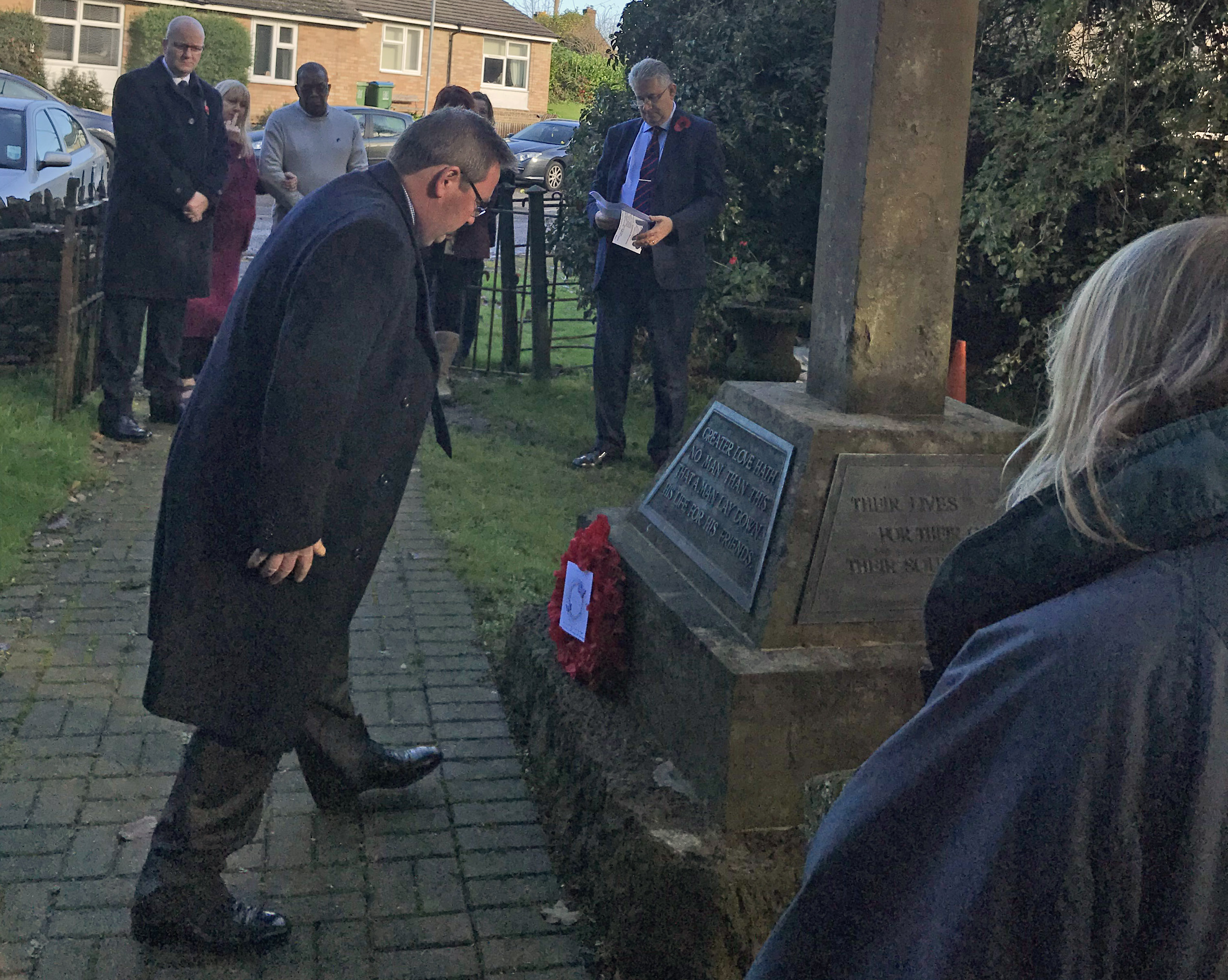
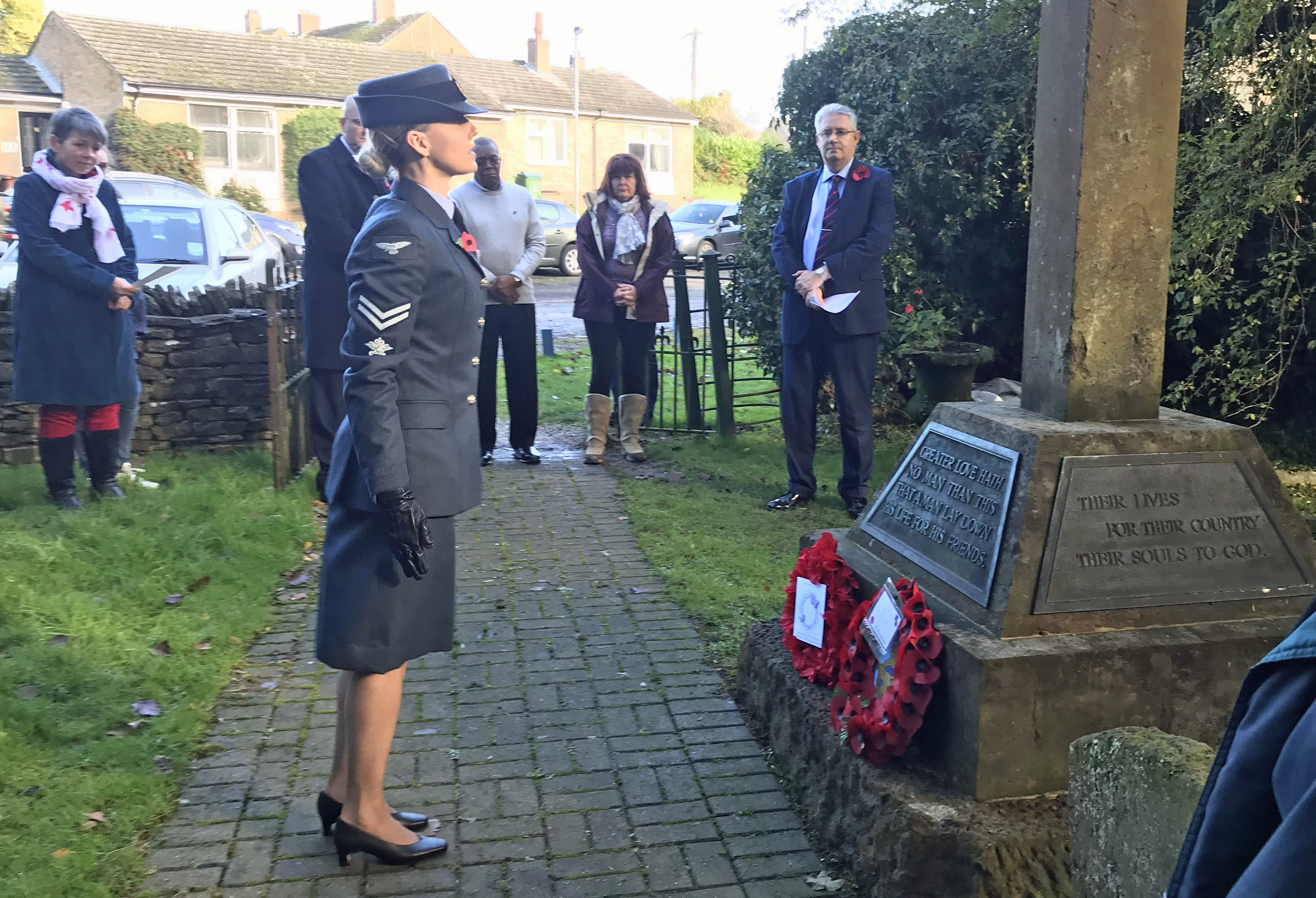
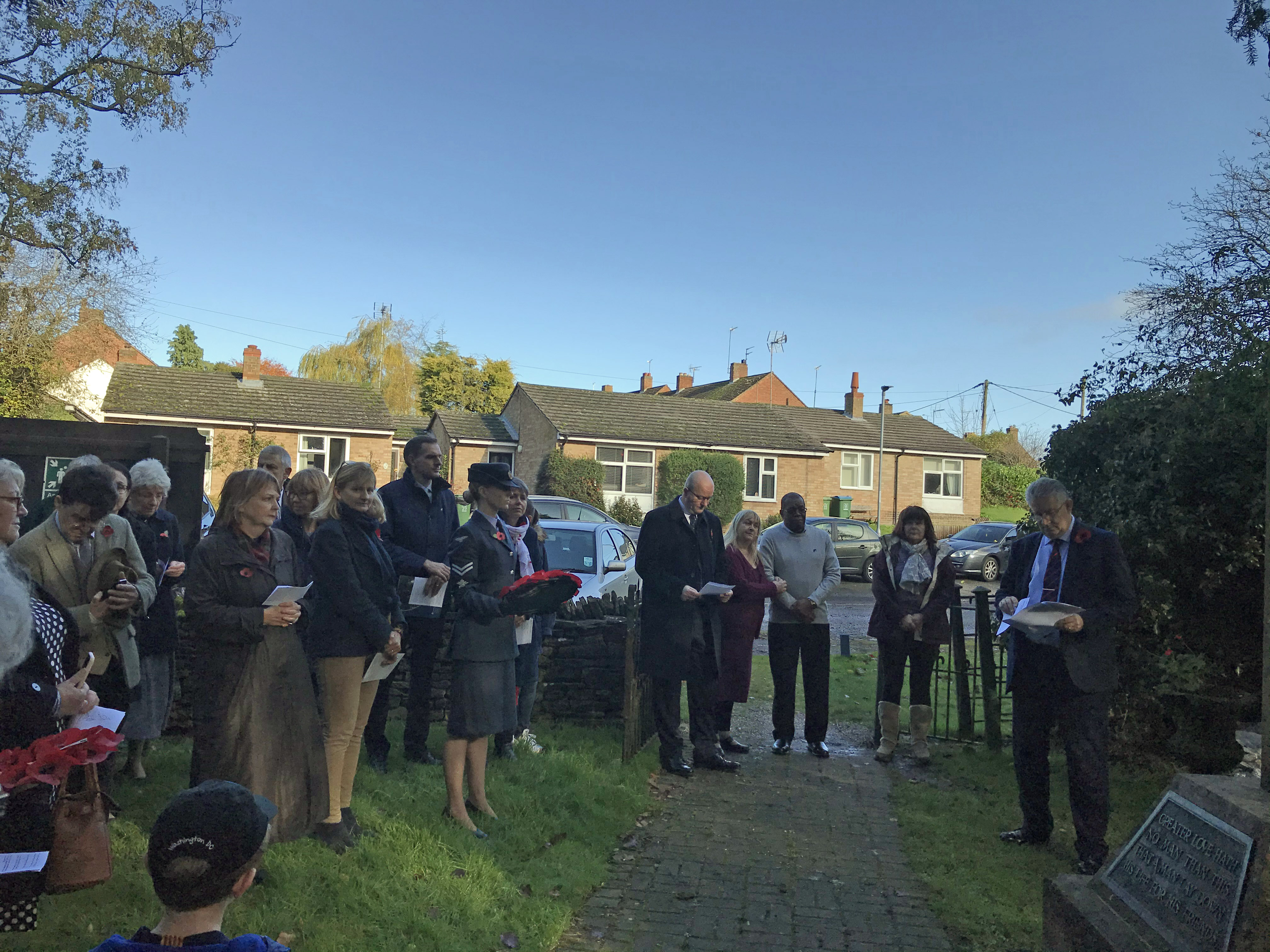
Nearly 90 people were present in total to witness this permanent piece of history for the village.
Sadly, later on the same day we heard that James Allan, brother of Sgt Robert Allan had passed away (aged 95) after Madge had spoken to him about the wonderful service dedication. James said he was ‘sad, delighted and so proud that the crew and his brother had been remembered by all of us at the special service’.
We remember those from bomber crew HZ437 who lost their lives in Westbury in World War 2.
Wireless operator /Air gunner. Pilot Officer Raymond Van Cleaf (Stuart’s cousin)
Pilot. SGT Sydney Roy Barnes
Navigator Pilot Officer. Harold Geoffrey Allen Thompson
Bomb Aimer. SGT Robert Allan
Air Gunner. SGT Edward 'Teddy' James Roberts
For further information, Stuart can be contacted here who researched and wrote the crew histories below
Pilot Officer Raymond Van Cleaf
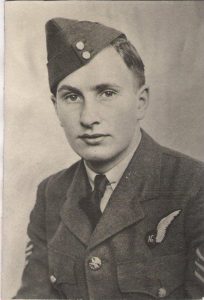
Raymond Van Cleaf was brought up in Hamilton, Ontario ,Canada and he joined the Royal Canadian Air Force in January 1941 after being a Reserve since August 1940. He then commenced his training as part of the ‘Commonwealth Air Training Plan’ which was a plan to train aircrew from the Commonwealth for the European, Middle East and Far East theatre of war.
By April 1942, Raymond had completed his two courses in Wireless and Air Gunnery at Guelph [ near his home town ] and Mount view [Eastern Canada] . He was then awarded his aircrew ‘ Wireless / Air gunner ‘ badge.
Raymond was the first to arrive on UK shores. He then had to undertake further courses for the ‘ European ‘ theatre of war before being posted to RAF Abingdon. It was here that he probably first saw active service whilst training on the ‘Whitley’ and then ‘ Wellington’ bomber. Christmas 1942 saw Raymond posted up to Yorkshire to carry out heavy bomber training on the Halifax’ bomber. After this training, he was posted to 102 Squadron RAF Pocklington for a short time.
A lake in Ontario Canada has been named after Raymond in his memory. "Van Cleaf Lake" is now a permanent memorial to his name.
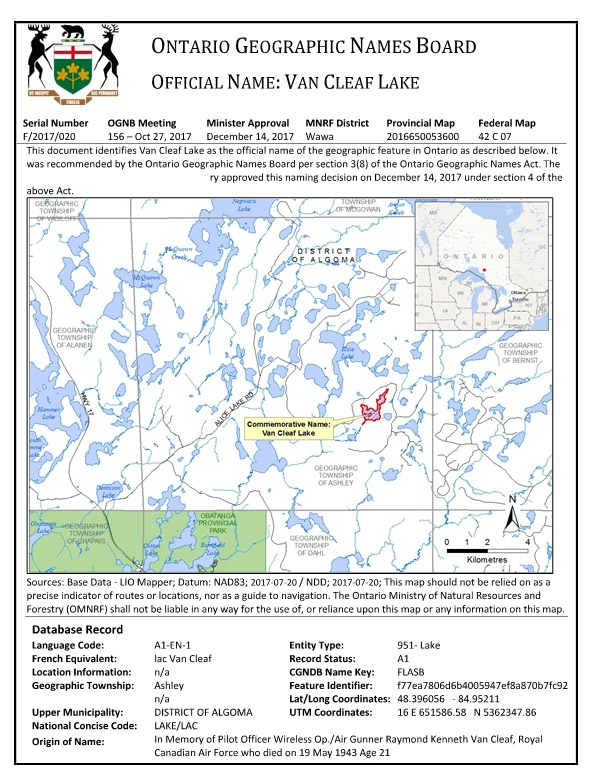
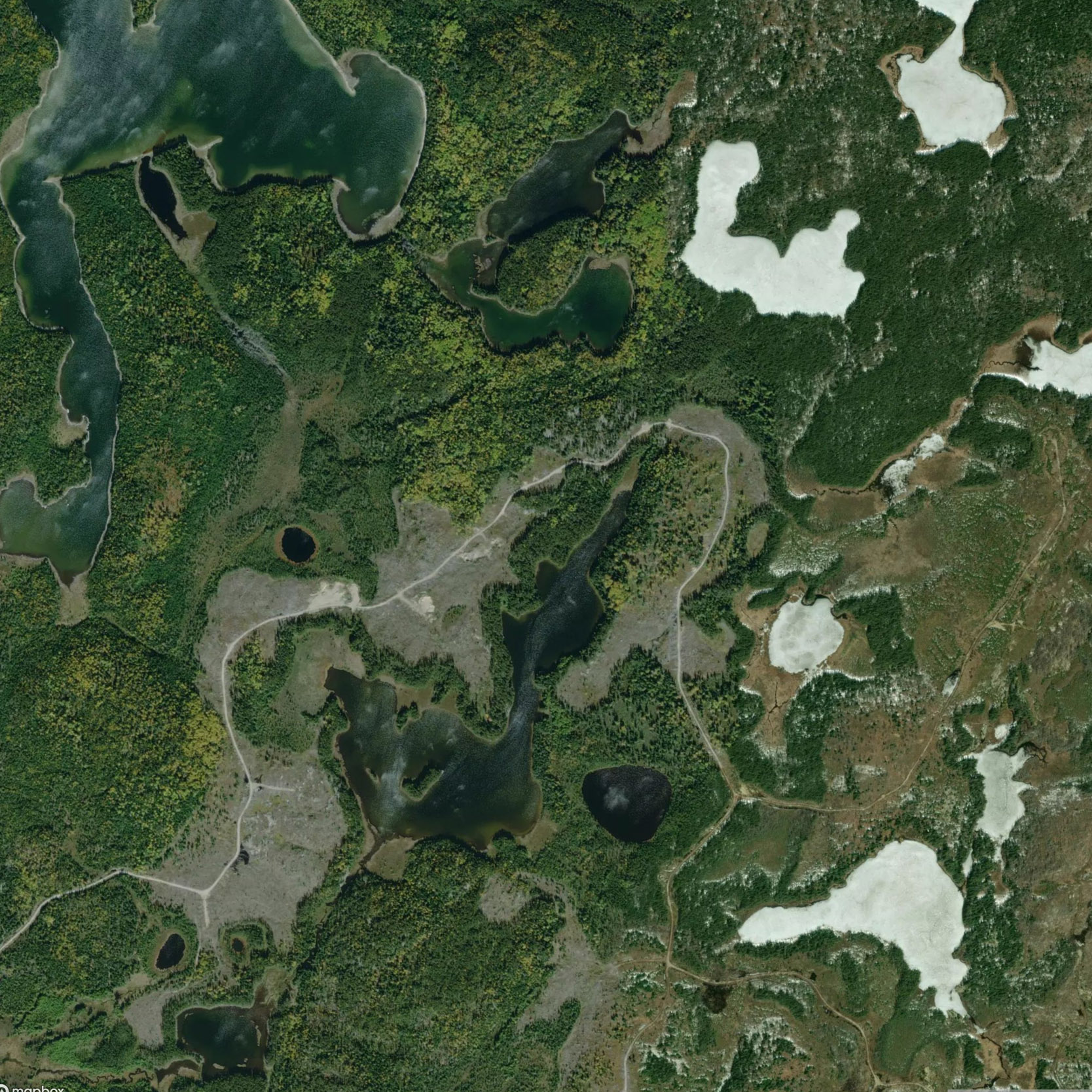
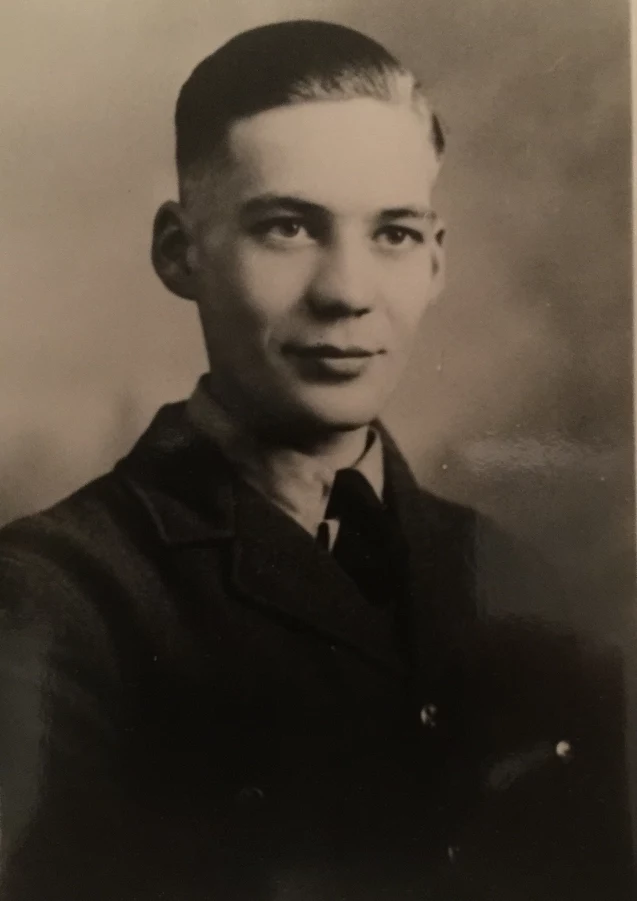
Sydney ‘Roy ‘Barnes was brought up in Portsmouth, Hampshire and joined the Royal Air Force Reserve in April 1941. He started his basic flying training in England before leaving for Canada in January 1942.
Roy did his winter Elementary flying training at an airfield called Caron in Saskatchewan in Central Canada and then went on to complete his Service Flying Training in the summer at Penhold, Alberta in Western Canada. It was in September 1942 that Roy finally gained his Pilot Wings.
Roy on arriving to the UK in Autumn 1942, was posted to RAF Harwell to learn his aircraft training on the Wellington bomber.
Navigator Pilot Officer. Harold Geoffrey Allen Thompson
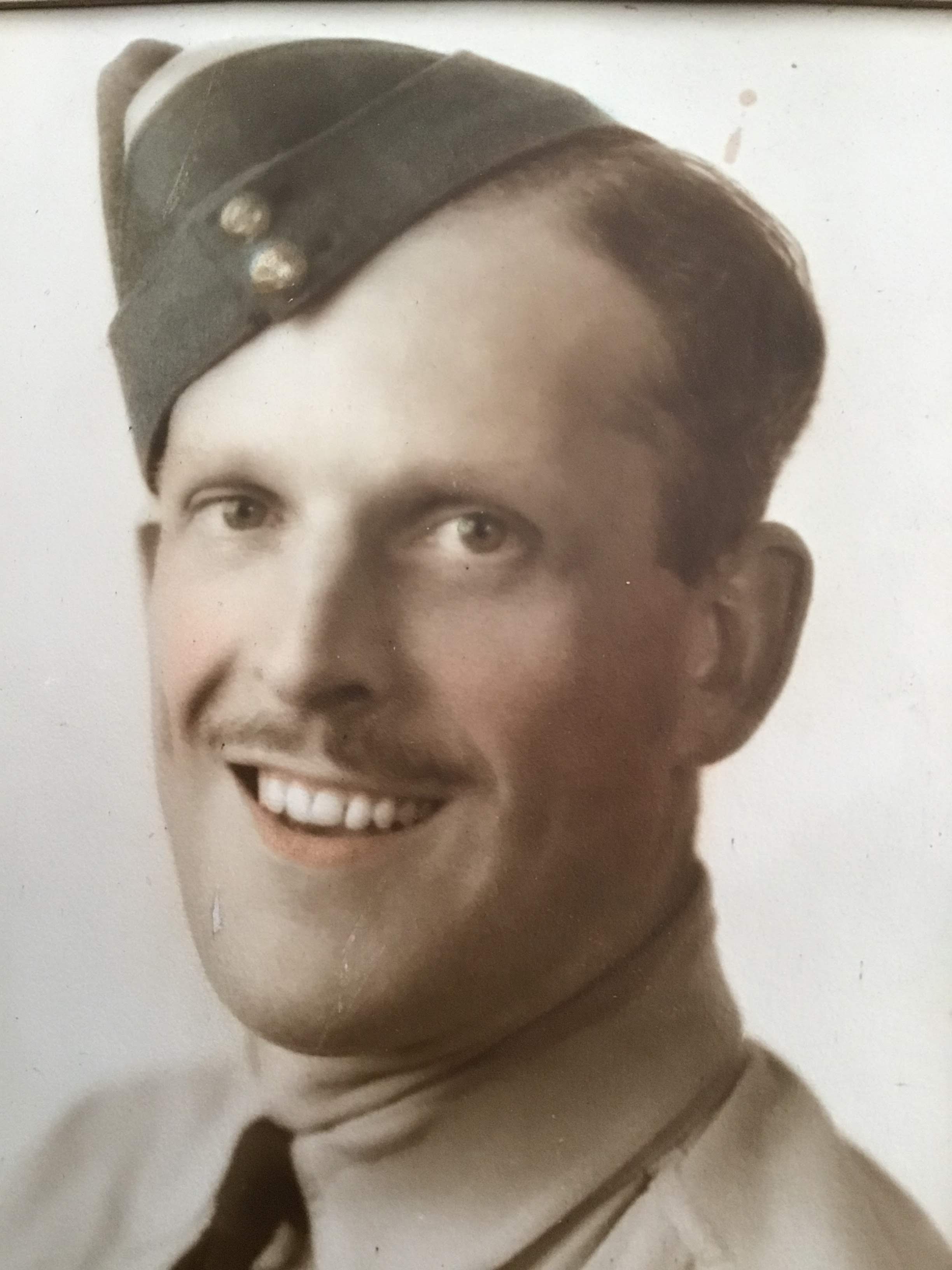
Harold was the oldest member of the crew of HZ437 aged 32.
Harold was a married man when he joined the RAFVR in September 1940 in Torquay, Devon.
The Grand hotel in Torquay was requisistioned by the RAF for enlistment and initial aircrew selection during the war.
During 1941 Harold he carried on his aircrew training at various camps including RAF Brize Norton. During this time Canada was ramping up its British Commonwealth Air training Plan and Harold was soon on a troopship to Canada in1942.
On arrival at Moncton, the Personnel reception centre in Canada, Harold was selected for Navigator training in the USA.
This involved a long train journey to Miami ,Florida via New York and a short stay over to visit the famous 'Jack Dempsey ' restaurant /bar on 49th st , Broadway.
Harold continued his journey down to Florida to attend the Navigation course at the Pan American Airways Navigation school in Coral Gables ,South Miami. His 6 month course involved maritime navigation on board flying boats launched from the 1930's era airport at 'Dinner Keys '. Now the Miami City Halls.
Harold and Marjorie's only child, daughter Gillian, was born in September 1942 - Harold was still on his course in the USA. He saw Gillian for the first time on return to the UK around November 1942.
Sadly Gillian was too young to remember her father, which was very sad for her. Stuart was so very happy to meet up with Gillian and family members after all the family searching for the first time in 2019.
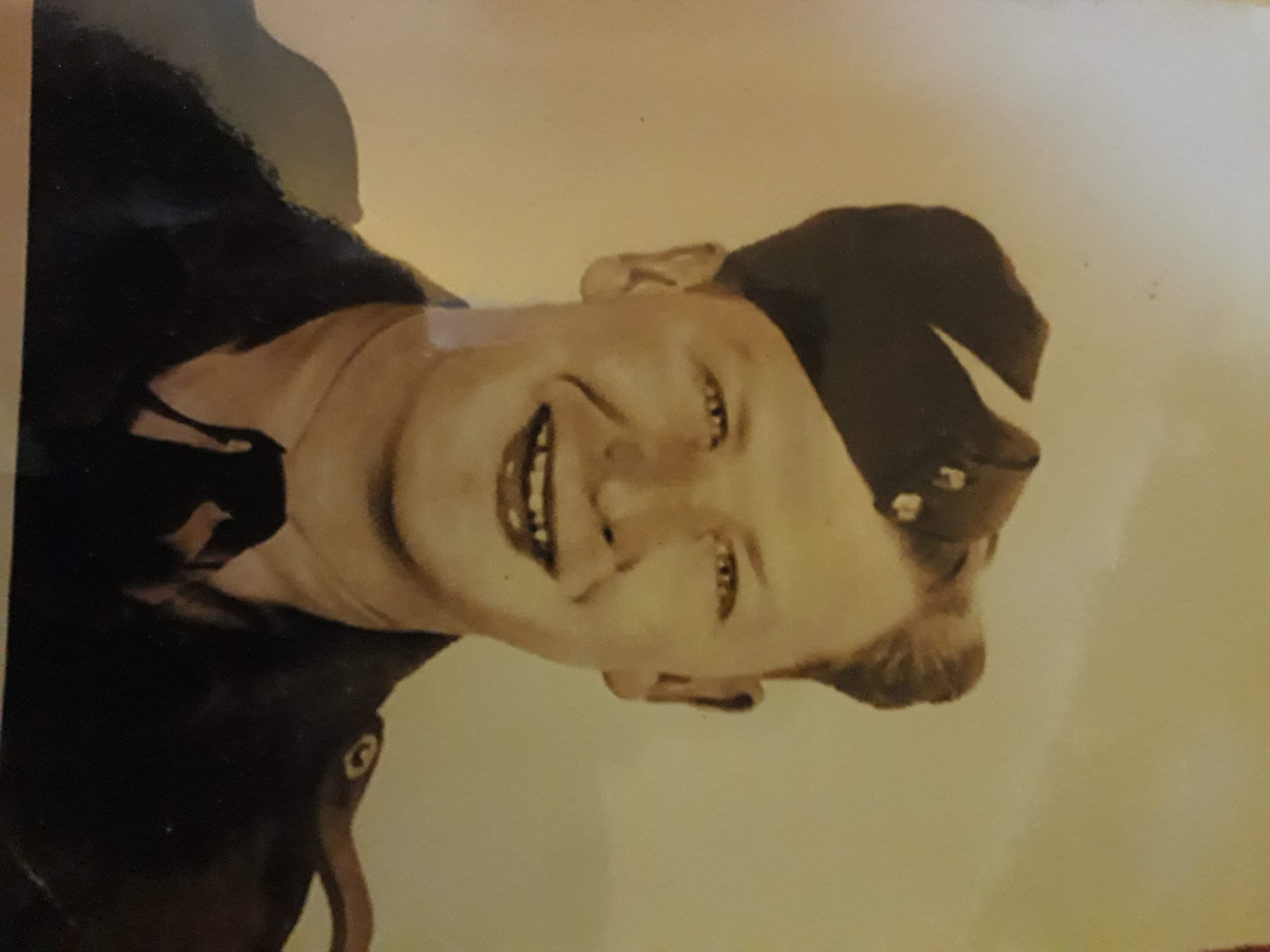
Robert was born in Dallas , Morayshire ,Scotland in 1921.
Before joining the RAFVR in July 1941 Bertie was a policeman, his great love was playing Rugby for his local school in the nearby town of Elgin.This often meant playing in the school team against 'Gordonstoun ' private boarding school team. It so happend at the school at the time was student - Prince Philip, who was born the same year as Bertie and loved the game as well and all athletic sports.
Robert enlisted at Edinburgh for aircrew selection and in April 1942 he was selected for Pilot training in the USA under the 'Arnold ' scheme.
Between 1941 and 1943 five thousand RAF trainees completed their training at the aerodrome - Turner Field / Dar Aero tech at Albany, South Georgia.
Sadly Robert was unable to complete the training in America and was sent back to Canada for further aircrew reselection, to KTS Trenton in Ontario - KTS stands for Composite Training Squadron in July 1942.
In August 1942 he was selected for Air Bomber ( Bomb aimer ) training at the BCAPT No 8 Bombing and Gunnery school at Lethbridge, Alberta,which is still an aerodrome today. The course was 8 to 12 weeks long.
Interestingly the Canadian Bomber Command Museum is located nearby, at the town of Nanton ,Alberta , 81 miles away from Lethbridge .
After completing the course and getting his Bomb Aimer wings, Robert returned to the UK in January in 1943.
Finally in March 1943 he was posted to 15 OTU at RAF Harwell and joined the crew.
Sadly Robert's younger brother James (Jimmy) was devastated, on hearing the news of the loss of his brother in May, whilst he was flying training in RAF Mosquito aircraft, in South Africa at the time.
Air Gunner Sgt Edward 'Teddy' James Roberts
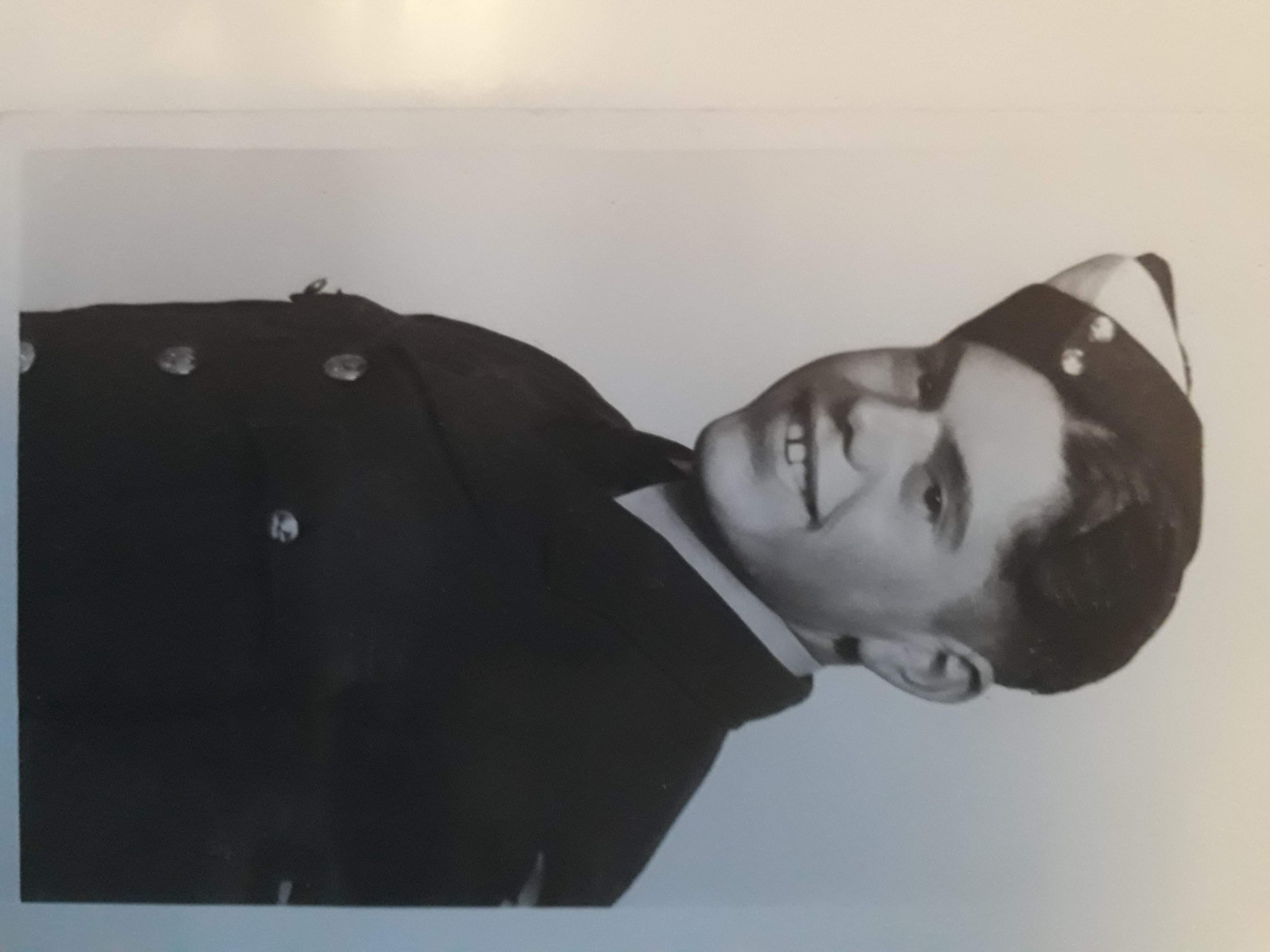
Edward was the youngest member of the crew, only being just over19 years of age at the date of the accident.
There are many coincidences between Edward and I, with my early RAF career and my grandmothers family on my fathers side.These I found during the research into Edward's family and his RAFVR training.
Edward joined the RAFVR just after his 17th birthday in October1940 at RAF Uxbridge. I joined the RAF some 34 years later at the age of just over 17 on the 8th of October 1974.
After initial training and aircrew selection Edward was posted to RAF Lossiemouth, Morayshire, Scotland in May 1941. As it happens my first posting in the RAF was to RAF Lossiemouth in May 1975 after my mechanic training!
On Edward's first posting, he was posted to the Aircraft Acceptance fight in Lossiemouth, where he worked on newly built 'Wellington ' bombers straight from the factories for 14 months. He celebrated his 18th birthday at Lossiemouth like I did. I was the same rank on my eighteenth birthday as Edward was - a Leading Aircraftsman or L A C.
Edward's last detachment within Lossiemouth was to No 20 O T U, which was the' Wellington' bomber, night bomber training unit. After his time on on 20 O T U, he was selected for Air Gunner training. Reporting to the No2 Air Gunnery at RAF Dalcross, Inverness, Scotland December 1942. On completing his course in February 1943 he gained his Air Gunner badge and promotion to the rank of Sergeant - my final rank in the RAF!
Edward's final posting was to 15 OTU RAF Harwell.
I mentioned earlier in the story that their was a family link between us two. Well Edward was buried in the churchyard of St Mary's church, South Higham, Kent, at his families request.
Edward was a choir boy at St Mary's church. We were soon to discover on visiting Edward's grave to pay respects, that my grandmothers family relatives on my fathers side were placed in the same cemetery unknown to me at the time. So our families would have known each other when Edward and his family lived in Higham.
Edward's parents ran the village grocers store.
The Crash and Memorial
On the 19th of May 1943, 2 days after the famous ‘ Dambusters raid ‘, during a training flight, the new ‘ Wellington bomber’ HZ437 suffered a port engine fail in flight. They then flew 30 minutes on one engine before attempting to land at the diversion airfield of RAF Turweston. They were then told when on final approach to make a landing on another runway and, whilst in the final circuit to line up with the new runway the aircraft lost control and crashed in farmland next to Westbury.
All five crew lost their lives. Four of the crew were buried at Bicester cemetery and the fifth crew member was buried at Higham, his home town in Kent.
In 2014 after a year’s investigation, the family managed to contact Jacky Owen, who kindly allowed them to plant a ‘Red Oak ‘ tree – a tree native to Ontario, Canada – Raymond’s homeland with a memorial plaque to all the crew members of HZ437 near to the crash site.
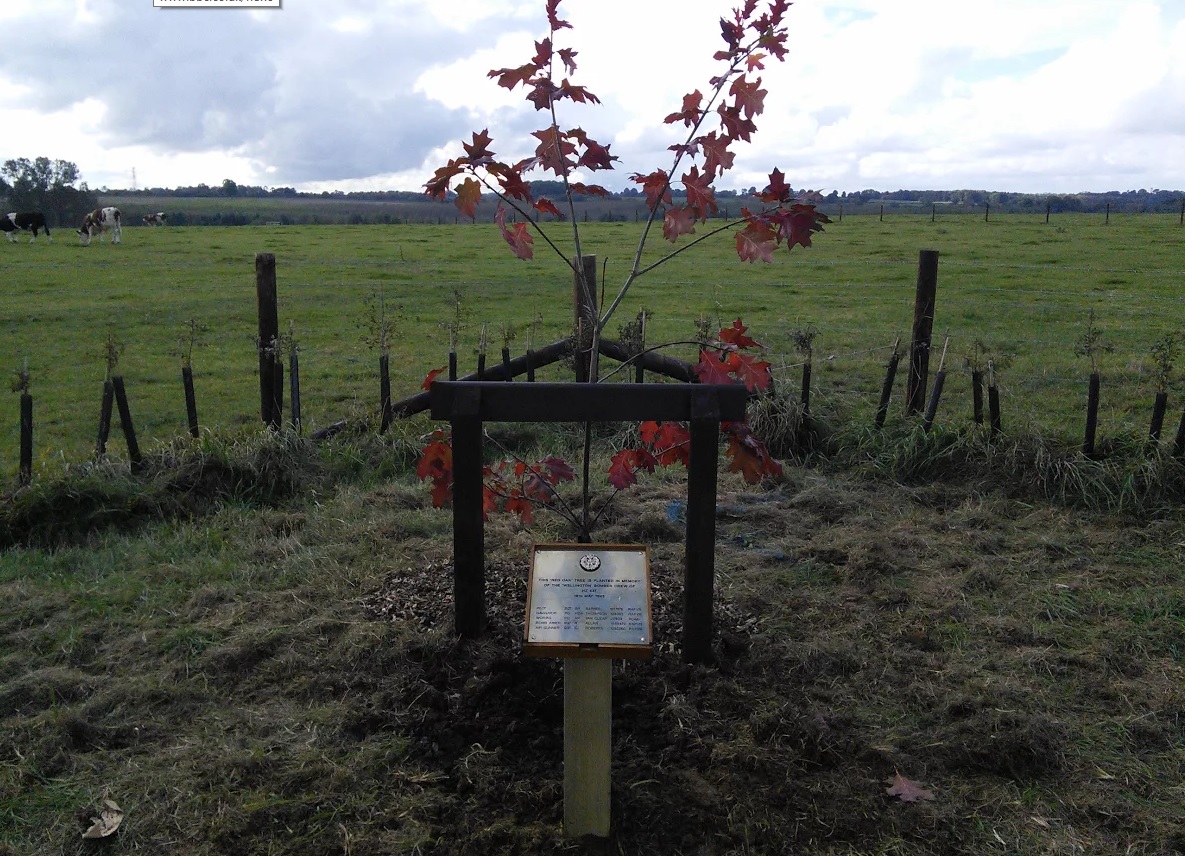
A year later there was a dedication service on the newly named ‘Red Oak farm’ which was a nice lasting tribute to the crew and recently, the two families met up on the Anniversary of the crash after 73 years at Bicester cemetery.
Later the memorial inside St Augustine's was dedicated and the crews names are read out at our Remembrance service each year alongside those lost from the village and Beachborough School.
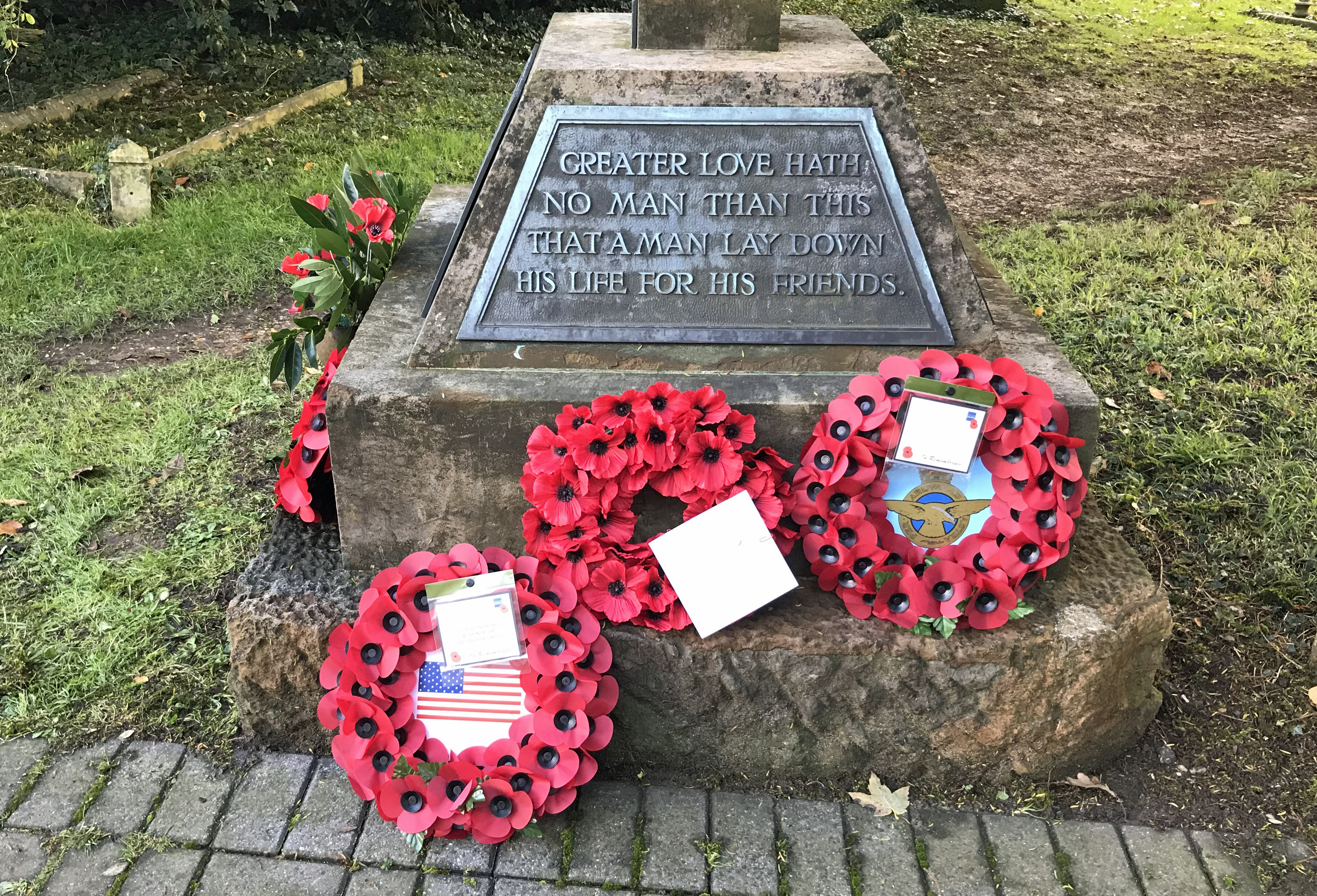
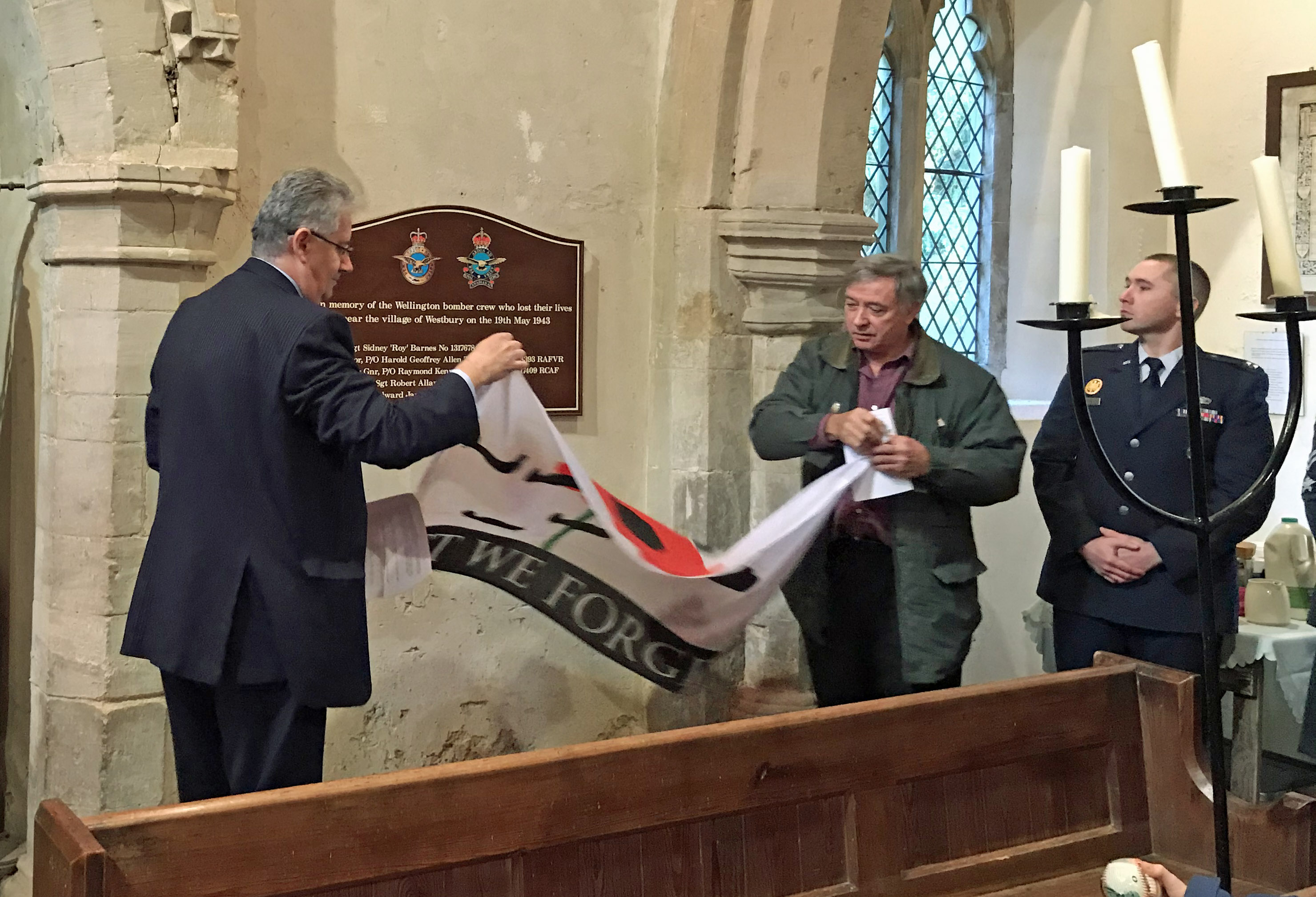
It costs over £20,000 each year to keep the church open and maintain the churchyard. If you are able to help at all, please click here or on the Parish Giving icon below. Thank you
